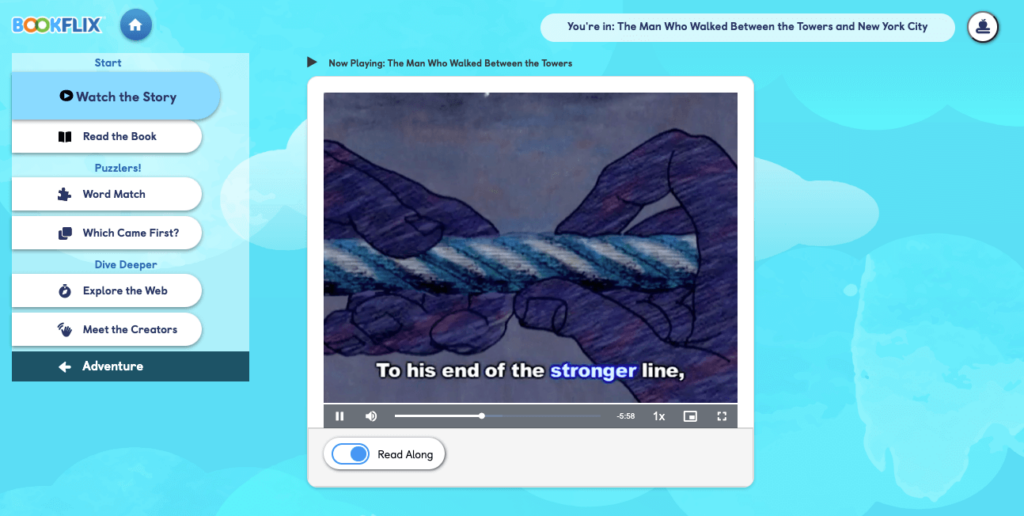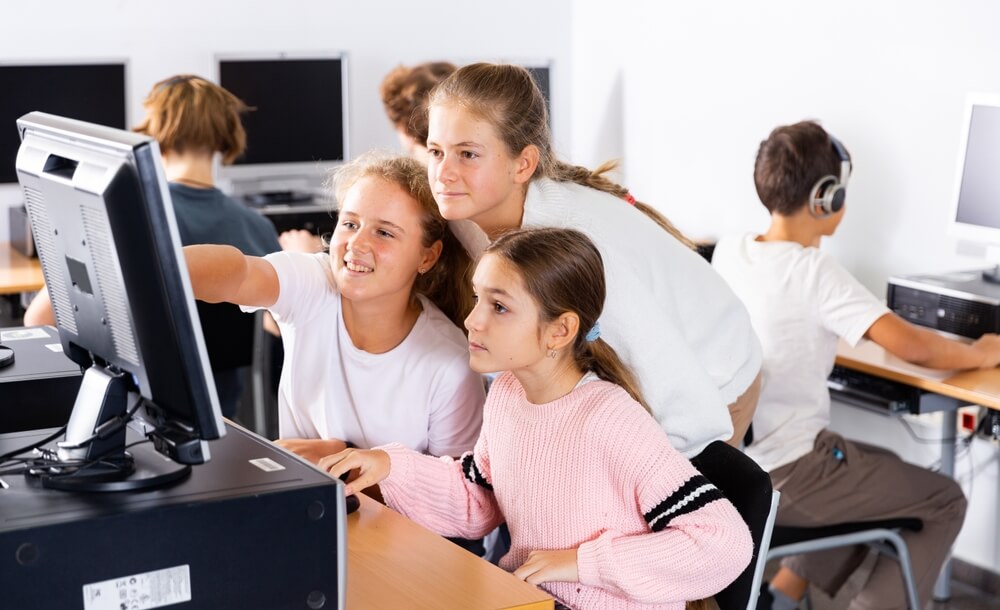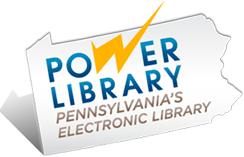
Research is at the core of knowledge. Nobody is born with an innate understanding of quantum physics. But through research, the knowledge can be obtained over time. That’s why teaching research skills to your students is crucial, especially during their early years.
But teaching research skills to students isn’t an easy task. Like a sport, it must be practiced in order to acquire the technique. Using these strategies, you can help your students develop safe and practical research skills to master the craft.
What Is Research?
By definition, it’s a systematic process that involves searching, collecting, and evaluating information to answer a question. Though the term is often associated with a formal method, research is also used informally in everyday life!
Whether you’re using it to write a thesis paper or to make a decision, all research follows a similar pattern.
- Choose a topic: Think about general topics of interest. Do some preliminary research to make sure there’s enough information available for you to work with and to explore subtopics within your subject.
- Develop a research question: Give your research a purpose; what are you hoping to solve or find?
- Collect data: Find sources related to your topic that will help answer your research questions.
- Evaluate your data: Dissect the sources you found. Determine if they’re credible and which are most relevant.
- Make your conclusion: Use your research to answer your question!
Why Do We Need It?
Research helps us solve problems. Trying to answer a theoretical question? Research. Looking to buy a new car? Research. Curious about trending fashion items? Research!
Sometimes it’s a conscious decision, like when writing an academic paper for school. Other times, we use research without even realizing it. If you’re trying to find a new place to eat in the area, your quick Google search of “food places near me” is research!
Whether you realize it or not, we use research multiple times a day, making it one of the most valuable lifelong skills to have. And it’s why — as educators —we should be teaching children research skills in their most primal years.
Teaching Research Skills to Elementary Students
In elementary school, children are just beginning their academic journeys. They are learning the essentials: reading, writing, and comprehension. But even before they have fully grasped these concepts, you can start framing their minds to practice research.
According to curriculum writer and former elementary school teacher, Amy Lemons, attention to detail is an essential component of research. Doing puzzles, matching games, and other memory exercises can help equip students with this quality before they can read or write.
Improving their attention to detail helps prepare them for the meticulous nature of research. Then, as their reading abilities develop, teachers can implement reading comprehension activities in their lesson plans to introduce other elements of research.
One of the best strategies for teaching research skills to elementary students is practicing reading comprehension. It forces them to interact with the text; if they come across a question they can’t answer, they’ll need to go back into the text to find the information they need.
Some activities could include completing compare/contrast charts, identifying facts or questioning the text, doing background research, and setting reading goals. Here are some ways you can use each activity:
- Compare/contrast charts: Choose 2 books with similar topics. Read them aloud or have them read in small groups. After reading, ask the students to write down the similarities and differences between the characters.
- How it translates: Step 3, collect data; Step 4, evaluate your data
- Identifying evidence: After reading a nonfiction book, write a short paragraph about the topic that includes facts from the book and some unrelated facts. Ask students to highlight the facts that were discussed in the book.
- Questioning the text: If students are unsure which are facts/not facts, encourage them to go back into the text to find their answers.
- How it translates: Step 3, collect data; Step 4, evaluate your data; Step 5, make your conclusion
- Background research: Before reading a book, do some research on the topic as a class. Look up some general facts and vocabulary words related to the book’s topic. This boosts their chances of understanding the text as they read.
- How it translates: Step 1, choose your topic
- Setting reading goals: As a class, come up with 3-5 questions related to your book’s topic before you start reading. After you read, use the text to answer the questions.
- How it translates: Step 2, develop a research question; Step 5, make your conclusion
Resources for Elementary Research
If you have access to laptops or tablets in the classroom, there are some free tools available through Pennsylvania’s POWER Kids to help with reading comprehension. Scholastic’s BookFlix and TrueFlix are 2 helpful resources that prompt readers with questions before, after, and while they read.
- BookFlix: A resource for students who are still new to reading. Students will follow along as a book is read aloud. As they listen or read, they will be prodded to answer questions and play interactive games to test and strengthen their understanding.

- TrueFlix: A resource for students who are proficient in reading. In TrueFlix, students explore nonfiction topics. It’s less interactive than BookFlix because it doesn’t prompt the reader with games or questions as they read. (There are still options to watch a video or listen to the text if needed!)

Teaching Research Skills to Middle School Students
By middle school, the concept of research should be familiar to students. The focus during this stage should be on credibility. As students begin to conduct research on their own, it’s important that they know how to determine if a source is trustworthy.
Before the internet, encyclopedias were the main tool that people used for research. Now, the internet is our first (and sometimes only) way of looking information up.
Unlike encyclopedias which can be trusted, students must be wary of pulling information offline. The internet is flooded with unreliable and deceptive information. If they aren’t careful, they could end up using a source that has inaccurate information!

How To Know If A Source Is Credible
In general, credible sources are going to come from online encyclopedias, academic journals, industry journals, and/or an academic database. If you come across an article that isn’t from one of those options, there are details that you can look for to determine if it can be trusted.
- The author: Is the author an expert in their field? Do they write for a respected publication? If the answer is no, it may be good to explore other sources.
- Citations: Does the article list its sources? Are the sources from other credible sites like encyclopedias, databases, or journals? No list of sources (or credible links) within the text is usually a red flag.
- Date: When was the article published? Is the information fresh or out-of-date? It depends on your topic, but a good rule of thumb is to look for sources that were published no later than 7-10 years ago. (The earlier the better!)
- Bias: Is the author objective? If a source is biased, it loses credibility.
An easy way to remember what to look for is to utilize the CRAAP test. It stands for Currency (date), Relevance (bias), Authority (author), Accuracy (citations), and Purpose (bias). They’re noted differently, but each word in this acronym is one of the details noted above.
If your students can remember the CRAAP test, they will be able to determine if they’ve found a good source.
Resources for Middle School Research
To help middle school researchers find reliable sources, the database Gale is a good starting point. It has many components, each accessible on POWER Library’s site. Gale Litfinder, Gale E-books, or Gale Middle School are just a few of the many resources within Gale for middle school students.

Teaching Research Skills To High Schoolers
The goal is that research becomes intuitive as students enter high school. With so much exposure and practice over the years, the hope is that they will feel comfortable using it in a formal, academic setting.
In that case, the emphasis should be on expanding methodology and citing correctly; other facets of a thesis paper that students will have to use in college. Common examples are annotated bibliographies, literature reviews, and works cited/reference pages.
- Annotated bibliography: This is a sheet that lists the sources that were used to conduct research. To qualify as annotated, each source must be accompanied by a short summary or evaluation.
- Literature review: A literature review takes the sources from the annotated bibliography and synthesizes the information in writing.
- Works cited/reference pages: The page at the end of a research paper that lists the sources that were directly cited or referenced within the paper.
Resources for High School Research
Many of the Gale resources listed for middle school research can also be used for high school research. The main difference is that there is a resource specific to older students: Gale High School.
If you’re looking for some more resources to aid in the research process, POWER Library’s e-resources page allows you to browse by grade level and subject. Take a look at our previous blog post to see which additional databases we recommend.
